Abstract
OBJECTIVE--To assess the effect of the London helicopter emergency medical service on survival after trauma. DESIGN--Prospective comparison of outcomes in cohorts of seriously injured patients attended by the helicopter and attended by London ambulance service land ambulances crewed by paramedics. SETTING--Greater London. SUBJECTS--337 patients attended by helicopter and 466 patients attended by ambulance who sustained traumatic injuries and died, stayed in hospital three or more nights, or had other evidence of severe injury and who were taken to any one of 20 primary receiving hospitals. MAIN OUTCOME MEASURE--Survival at six months after the incident. RESULTS--After differences in the nature and severity of the injuries in the two cohorts were accounted for the estimated survival rates were the same (relative risk of death with helicopter = 1.0; 95% confidence interval 0.7 to 1.4). An analysis with trauma and injury severity scores (TRISS) found 16% more deaths than predicted in the helicopter cohort but only 2% more in the ambulance cohort. There was no evidence of a difference in survival for patients with head injury but a little evidence that patients with major trauma (injury severity score > or = 16) were more likely to survive if attended by the helicopter. An estimated 13 (-5 to 39) extra patients with major trauma could survive each year if attended by the helicopter. CONCLUSION--Any benefit in survival is restricted to patients with very severe injuries and amounts to an estimated one additional survivor of major trauma each month. Over all the helicopter caseload, however, there is no evidence that it improves the chance of survival in trauma.
Full text
PDF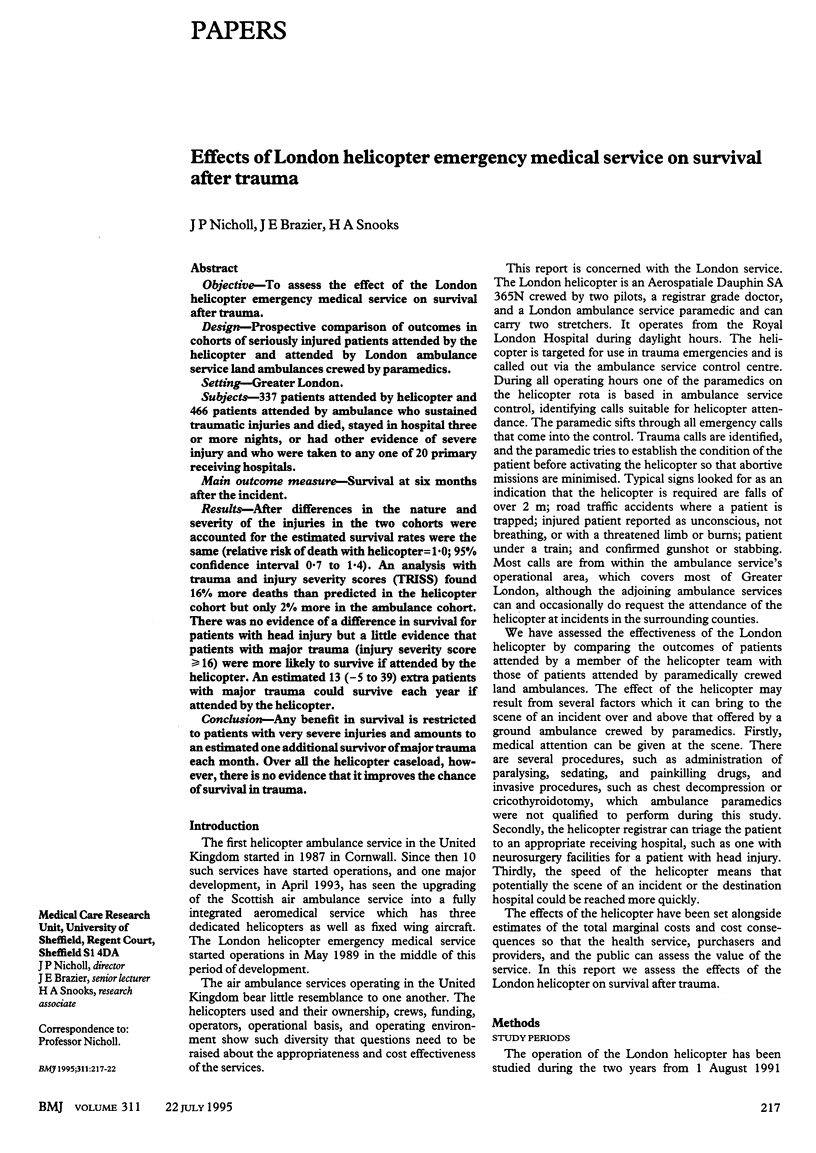
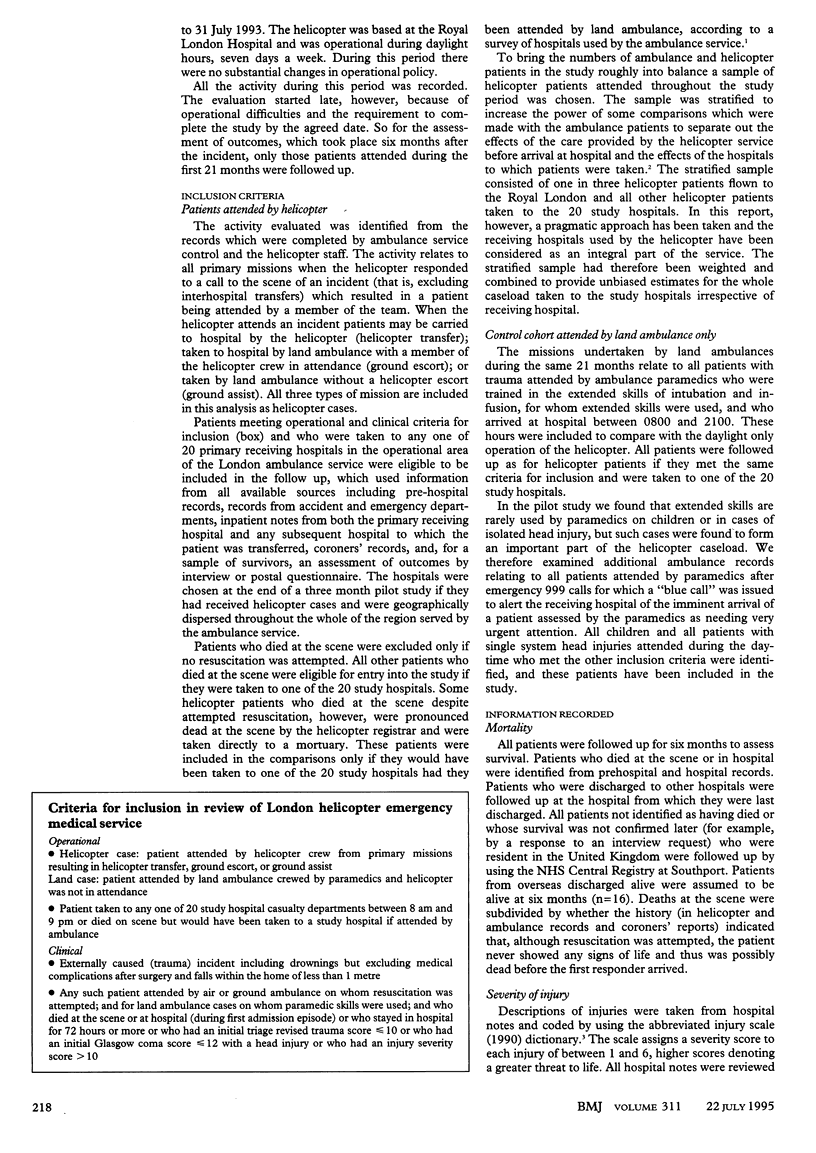
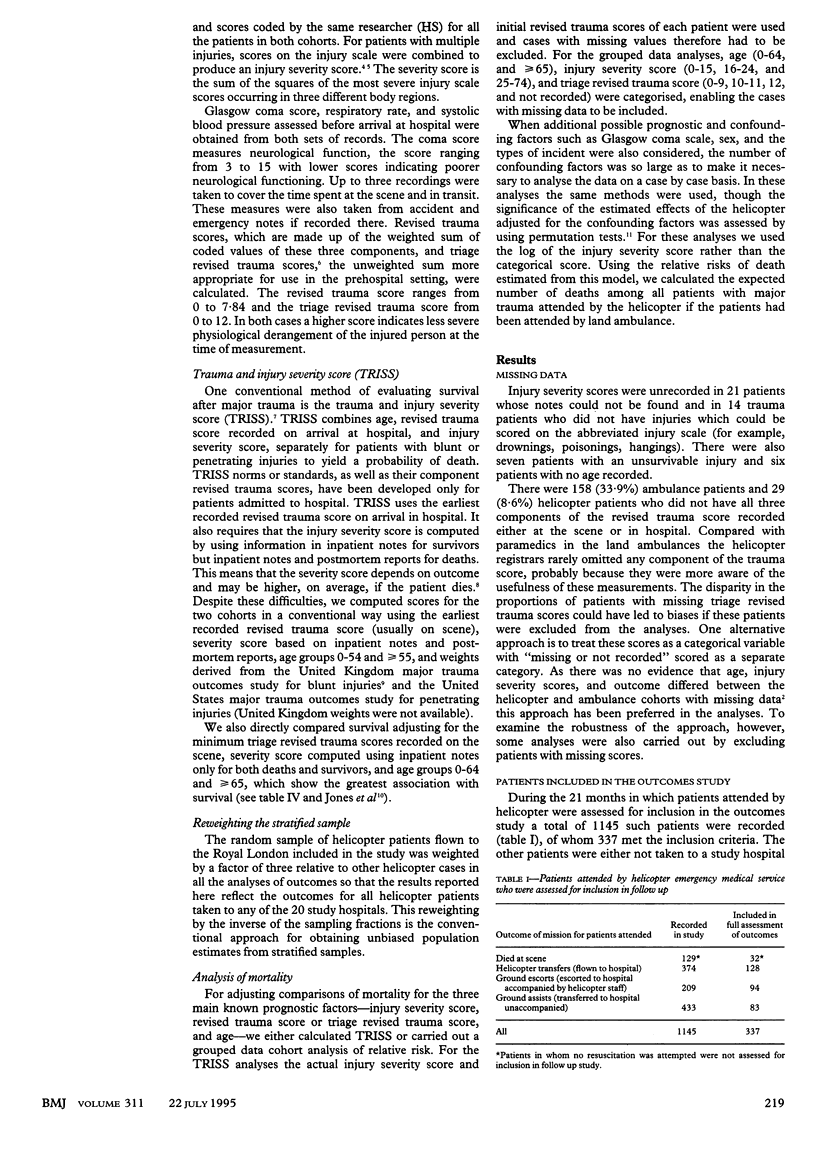
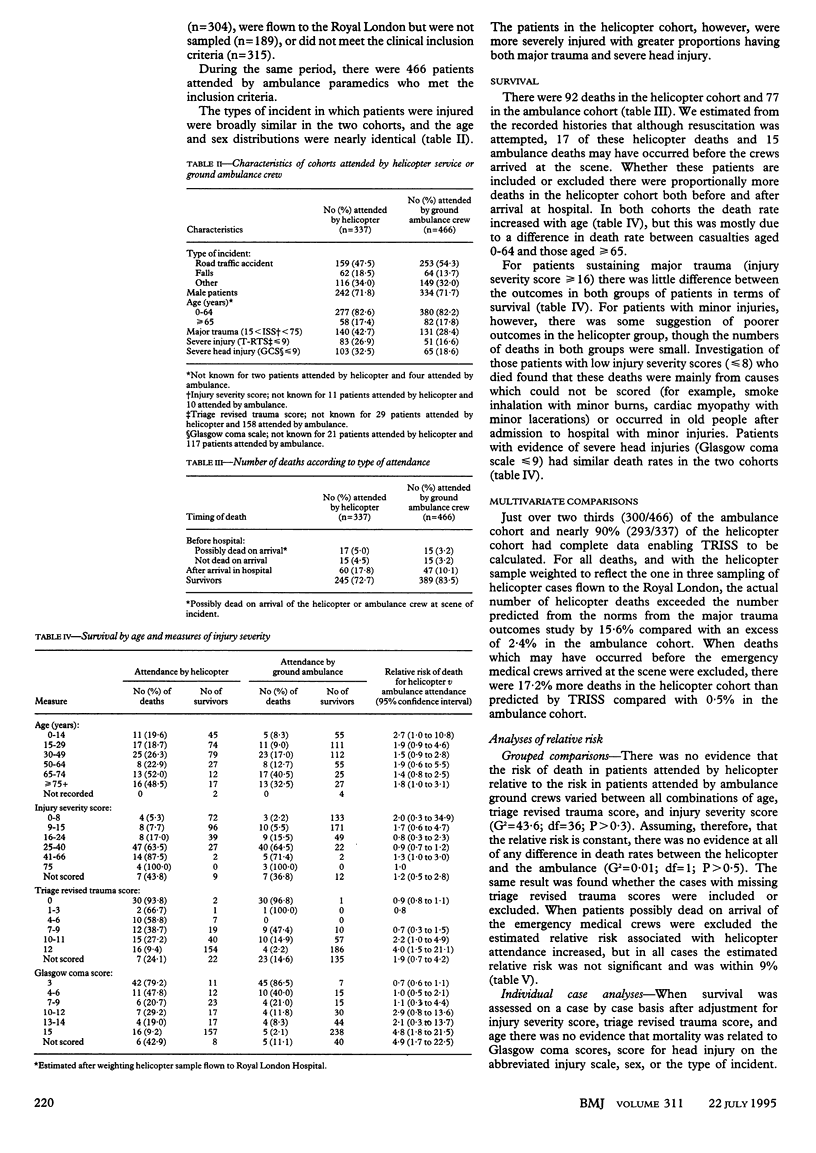
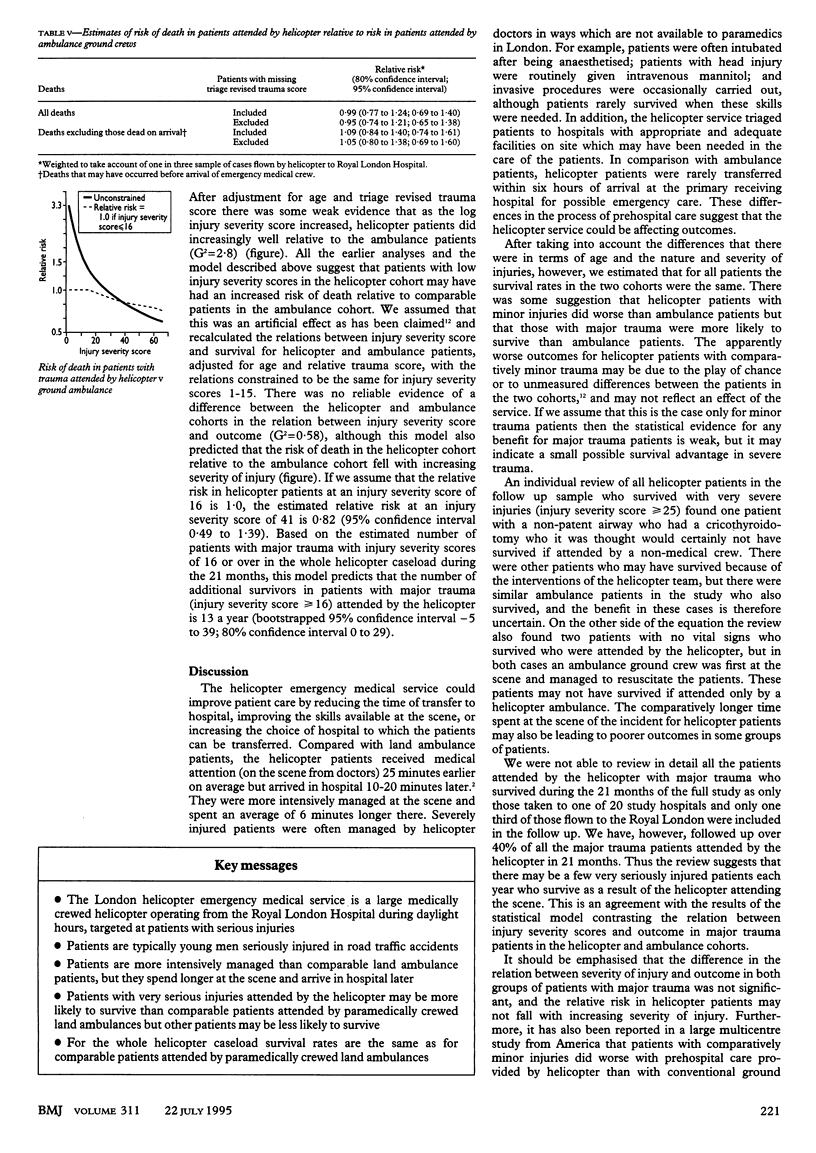
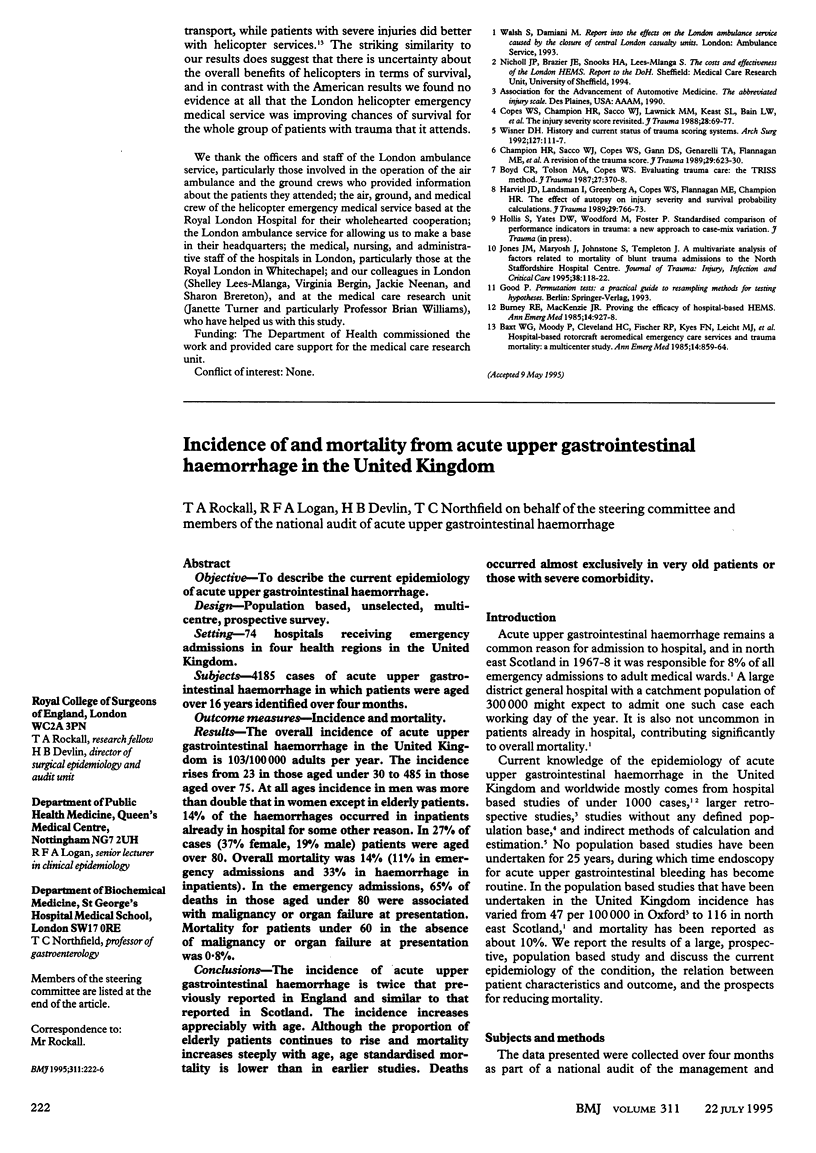
Selected References
These references are in PubMed. This may not be the complete list of references from this article.
- Baxt W. G., Moody P., Cleveland H. C., Fischer R. P., Kyes F. N., Leicht M. J., Rouch F., Wiest P. Hospital-based rotorcraft aeromedical emergency care services and trauma mortality: a multicenter study. Ann Emerg Med. 1985 Sep;14(9):859–864. doi: 10.1016/s0196-0644(85)80634-x. [DOI] [PubMed] [Google Scholar]
- Boyd C. R., Tolson M. A., Copes W. S. Evaluating trauma care: the TRISS method. Trauma Score and the Injury Severity Score. J Trauma. 1987 Apr;27(4):370–378. [PubMed] [Google Scholar]
- Burney R. E., Mackenzie J. R. Proving the efficacy of hospital-based HEMS. Ann Emerg Med. 1985 Sep;14(9):927–928. doi: 10.1016/s0196-0644(85)80650-8. [DOI] [PubMed] [Google Scholar]
- Champion H. R., Sacco W. J., Copes W. S., Gann D. S., Gennarelli T. A., Flanagan M. E. A revision of the Trauma Score. J Trauma. 1989 May;29(5):623–629. doi: 10.1097/00005373-198905000-00017. [DOI] [PubMed] [Google Scholar]
- Copes W. S., Champion H. R., Sacco W. J., Lawnick M. M., Keast S. L., Bain L. W. The Injury Severity Score revisited. J Trauma. 1988 Jan;28(1):69–77. doi: 10.1097/00005373-198801000-00010. [DOI] [PubMed] [Google Scholar]
- Harviel J. D., Landsman I., Greenberg A., Copes W. S., Flanagan M. E., Champion H. R. The effect of autopsy on injury severity and survival probability calculations. J Trauma. 1989 Jun;29(6):766–773. doi: 10.1097/00005373-198906000-00012. [DOI] [PubMed] [Google Scholar]
- Jones J. M., Maryosh J., Johnstone S., Templeton J. A multivariate analysis of factors related to the mortality of blunt trauma admissions to the North Staffordshire Hospital Centre. J Trauma. 1995 Jan;38(1):118–122. doi: 10.1097/00005373-199501000-00028. [DOI] [PubMed] [Google Scholar]


